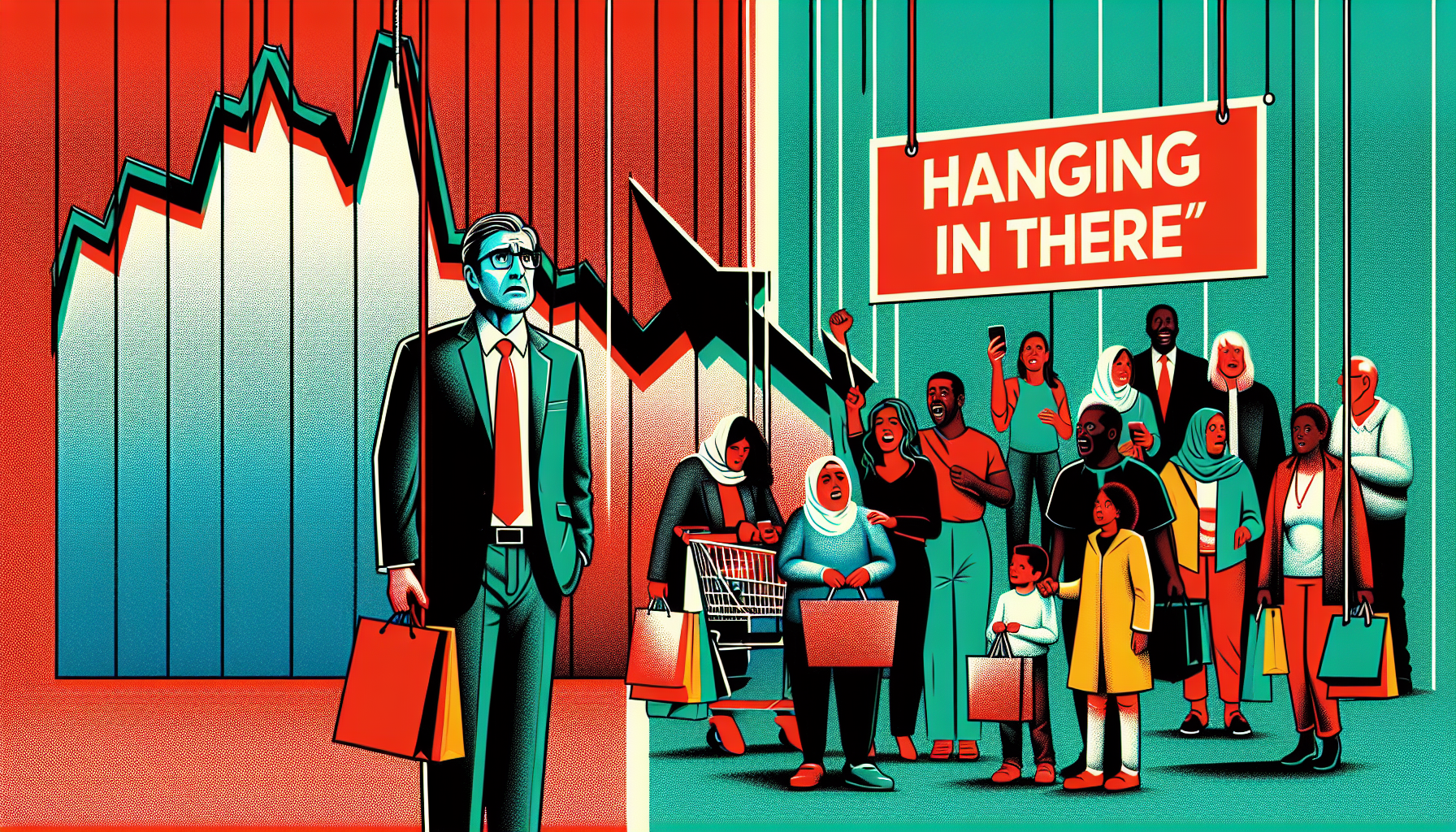
tl;dr
As JPMorgan's Jamie Dimon signals a weakening economy and the Fed faces critical decisions, conflicting signals emerge: revised job data, surging inflation, and resilient yet divided consumer spending. The path forward hangs in the balance.
The U.S. economy finds itself at a crossroads as leading financial figures sound alarms about its trajectory, even as consumer resilience persists. JPMorgan Chase CEO Jamie Dimon’s recent assertion that the economy is “weakening” has added to the growing chorus of caution ahead of the Federal Reserve’s pivotal September meeting. His comments come amid a wave of data revelations that have reshaped perceptions of economic health, raising questions about the path forward for policymakers and investors alike.
Dimon’s remarks, delivered on CNBC, underscored a stark reality: the Bureau of Labor Statistics revised its job growth figures downward by 911,000 for the 12 months ending in March 2025, marking the largest preliminary adjustment since 2000. While such revisions are routine as more data is analyzed, the scale of the cut has amplified concerns about the labor market’s durability. “Whether it’s on the way to recession or just weakening, I don’t know,” Dimon admitted, reflecting the uncertainty gripping the financial sector.
The Fed’s upcoming meeting has become a focal point for market expectations. With inflation surging to its highest level since January—driven by a 2.9% annual rise in the Consumer Price Index—the central bank faces pressure to balance rate cuts against persistent price pressures. Dimon suggested the Fed will likely lower rates, but cautioned that the move might not significantly alter the economy’s trajectory. “It probably won’t be consequential,” he said, a sentiment that hints at skepticism about the effectiveness of monetary policy in the current climate.
Despite Dimon’s warnings, consumer spending has remained a surprising anchor. Wells Fargo CEO Charles Scharf highlighted a “big dichotomy” between higher- and lower-income households, noting that while overall spending remains robust, lower-income consumers are stretching their budgets to pre-pandemic levels. Grocery prices, which rose 0.6% in July and August—the largest monthly increase since 2022—have exacerbated this divide. Yet, Wells Fargo’s CFO, Mike Santomassimo, reported declining credit delinquencies, suggesting that even as households face financial strain, their repayment habits remain stable.
Bank of America’s CFO, Alastair Borthwick, added further nuance, citing a 4.5% year-over-year increase in consumer spending on the bank’s cards—a faster pace than in 2024. Synchrony Financial’s CFO, Brian Wenzel, summarized the mood with a simple observation: “The consumer is hanging in there.” This resilience, however, masks underlying vulnerabilities. Lower-income households, in particular, are increasingly reliant on credit and savings to maintain spending, raising concerns about long-term sustainability.
The contrast between economic indicators and consumer behavior highlights the complexity of the current landscape. While job market revisions and inflation data point to a weakening economy, spending patterns suggest a more nuanced picture. For the Fed, the challenge lies in determining whether to act decisively on rates or wait for clearer signals. A premature cut could risk fueling inflation, while inaction might accelerate economic stagnation.
As investors and policymakers navigate this uncertainty, the interplay between macroeconomic data and microeconomic realities will shape the next phase of the economic narrative. Dimon’s warning, paired with the resilience of consumer spending, underscores a pivotal moment: the economy’s ability to adapt may determine whether the slowdown is a temporary blip or the precursor to a more sustained downturn. The Fed’s decision in September will be closely watched, not just for its immediate impact, but for the signal it sends about the broader health of the U.S. economy.